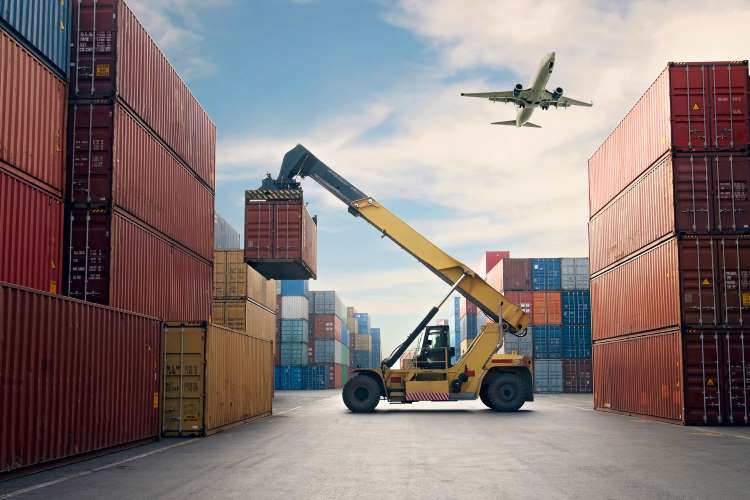India’s goal of achieving $1 trillion in merchandise exports is facing the hurdle of non-tariff barriers, an obstacle that is hindering its export potential. As global trade dynamics evolve, the imposition of NTBs emerges as a complex problem hindering India’s trade performance. A report by Global Trade Research Initiative delves into the intricacies of non-tariff barriers, scrutinising their impact on India’s key exports, outlining strategies for mitigation, and emphasising the critical importance of collaborative efforts in reshaping the nation’s export landscape.
The realm of international trade extends beyond tariffs and customs duties. Non-tariff barriers comprise an array of regulations, standards, and practices that countries employ to regulate imports, often posing impediments to free trade. While some non-tariff measures arise from legitimate concerns such as health, safety, or environmental protection, others transform into non-tariff barriers when their application becomes arbitrary or lacks logical justification. This distinction sets the stage for the challenges India confronts in its pursuit of expanding export markets.
READ I Digital rupee: India’s geopolitical game changer in CBDC race
Key sectors facing non-tariff barriers
Several sectors of Indian economy face non-tariff barriers, dampening their growth potential on the global stage. Products ranging from chilies to ceramics find themselves ensnared in the intricate web of NTBs imposed by major trading partners. Noteworthy among these are:
Agricultural exports: Chilies, tea, basmati rice, milk, poultry, bovine meat, and fish face barriers to entry in the EU.
Pharmaceutical and healthcare products: Sesame seeds, shrimps, and medicines facing hurdles to access Japanese markets.
Manufacturing and industrial goods: Fruits and dairy products encountering restrictions when exporting to China and the US.
Apparels and textiles: Japanese markets imposing obstacles on Indian textiles, particularly apparels.
High-tech and industrial commodities: Electrical, medical devices, and household appliances hindered in their journey to Brazilian markets.
Strategies for overcoming non-tariff barriers
Addressing the challenges posed by NTBs necessitates a multifaceted strategy that empowers India to navigate these barriers and bolster its exports. A dual approach emerges as a promising way to mitigate the influence of NTBs on exports.
Upgrade domestic systems: A pivotal step lies in upgrading India’s domestic systems to align with international standards, thereby ensuring the quality of its exports meets the stringent criteria set forth by trading partners. Specifically, India must focus on three critical categories of NTBs:
Pesticide levels in food products: India’s agricultural exports are hampered by the presence of pesticide residues, particularly in products such as basmati rice, chilies, and tea. Harmonizing domestic practices with international maximum residue levels is essential to enable unrestricted access to global markets.
Foot and mouth disease and presence of pests: The prevalence of foot and mouth disease in India acts as a barrier to the export of products such as milk, poultry, and bovine meat. By establishing FMD-free zones and enhancing disease control measures, India can alleviate this concern and gain access to a broader spectrum of international markets.
Quality inspections and suspect quality: Rigorous quality inspections, while crucial, often become excessive, impeding exports. Indian stakeholders must engage in constructive dialogue with importing nations to ensure that inspection protocols are reasonable and based on scientific principles.
Engage with partner countries: Collaborative diplomacy assumes centre stage as India strives to overcome the challenges of NTBs. Engaging in meaningful discussions with partner countries and advocating for reasonable solutions is paramount. In instances where unreasonable standards persist, India must be prepared to assert its position and consider proportional retaliatory measures. This approach underscores India’s commitment to fair trade practices and equitable resolution.
The way ahead
The labyrinth of non-tariff barriers presents a formidable challenge to India’s pursuit of a $1 trillion exports target. Yet, within this challenge lies the impetus for transformation and innovation. The journey towards surmounting NTBs demands a concerted effort, involving industry stakeholders, policymakers, and trade partners. By upgrading domestic systems to align with global standards and engaging in diplomatic efforts, India can unlock its export potential and set forth on a trajectory of sustained growth.
In an increasingly interconnected world, the pursuit of trade without undue impediments stands as a cornerstone of cooperation. As India navigates the complexities of NTBs, it ushers in a future where trade thrives unhindered, fostering a world where collaboration and equitable exchange define the fabric of international commerce.

